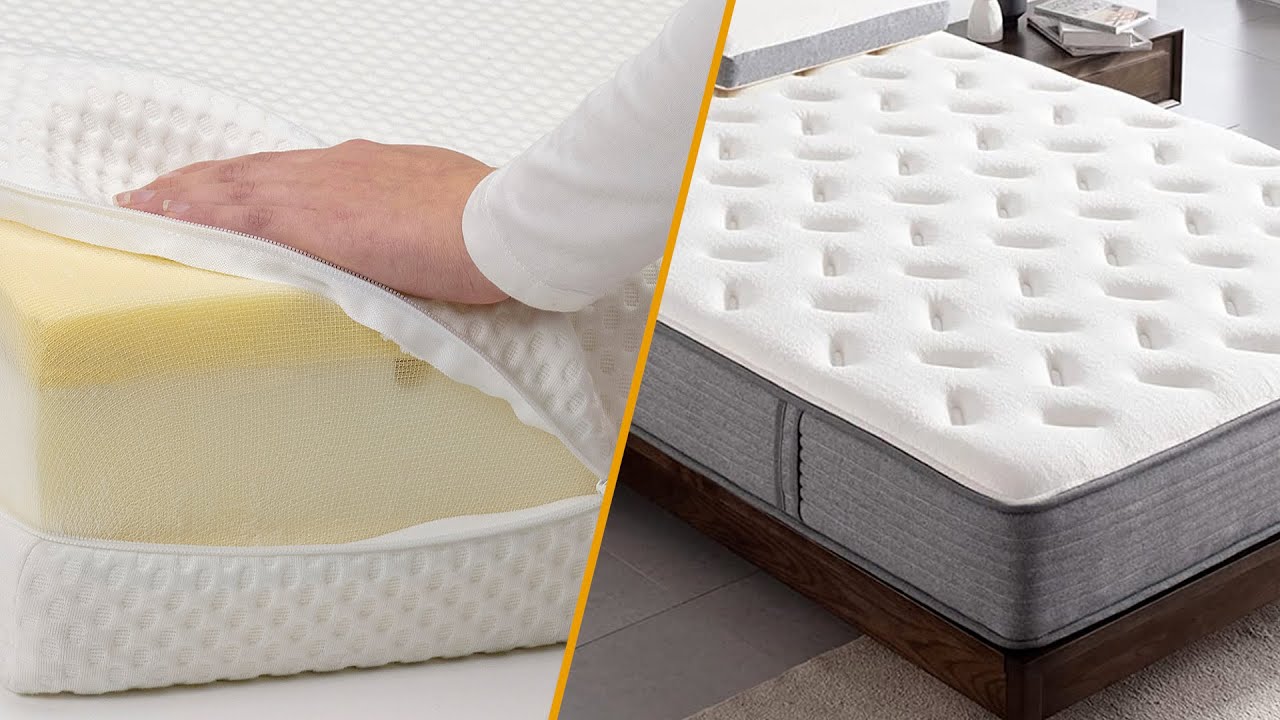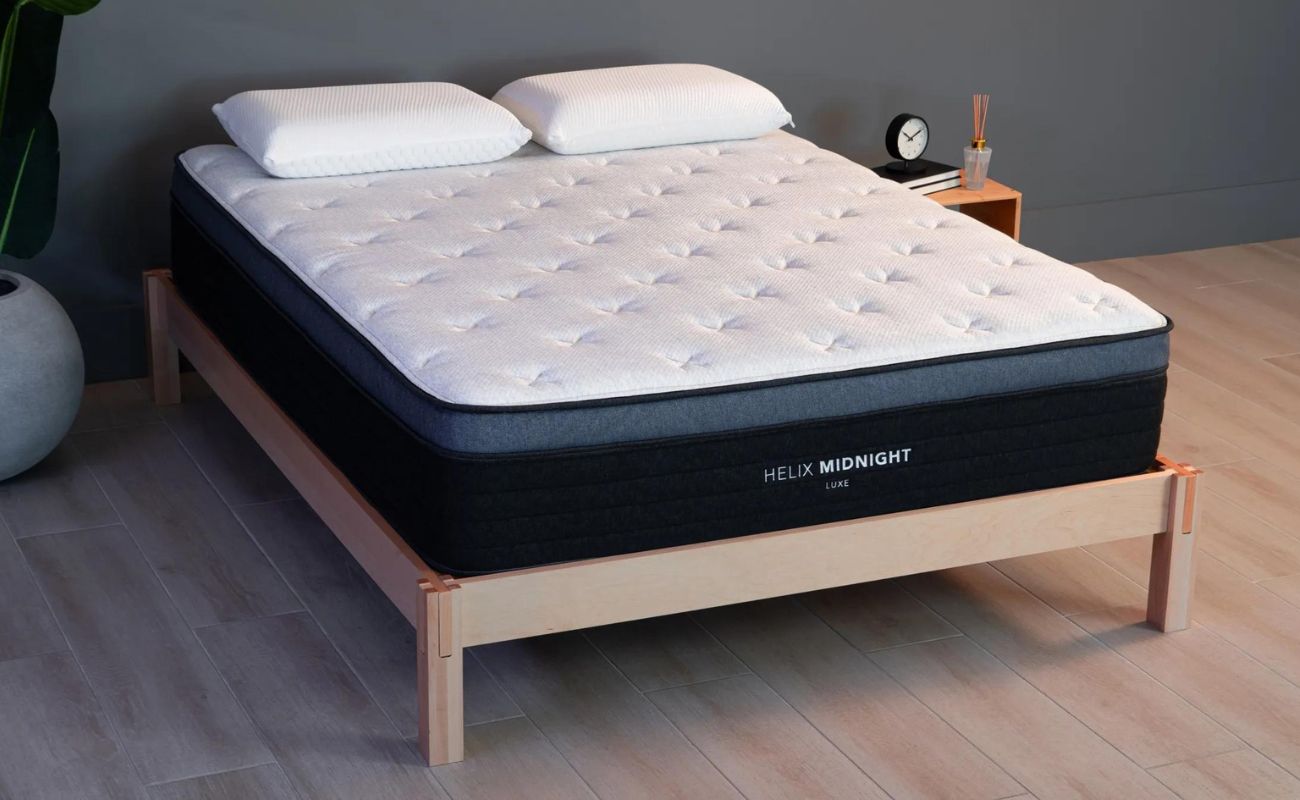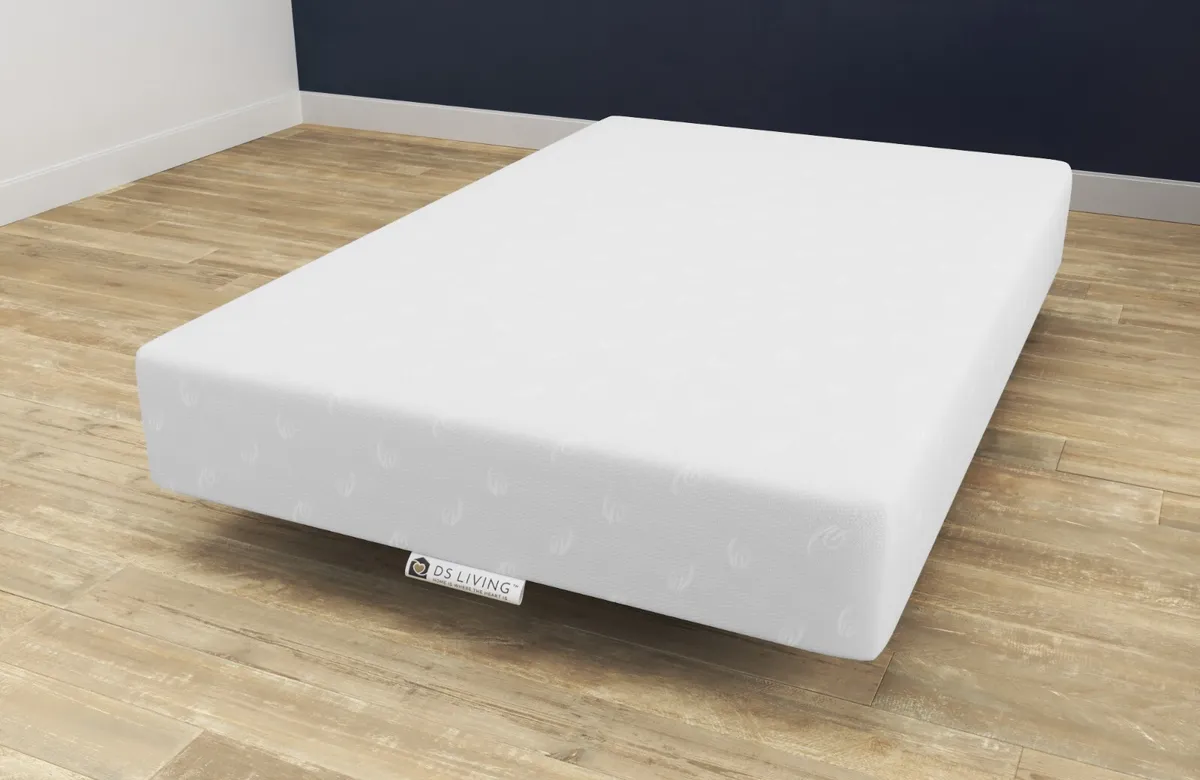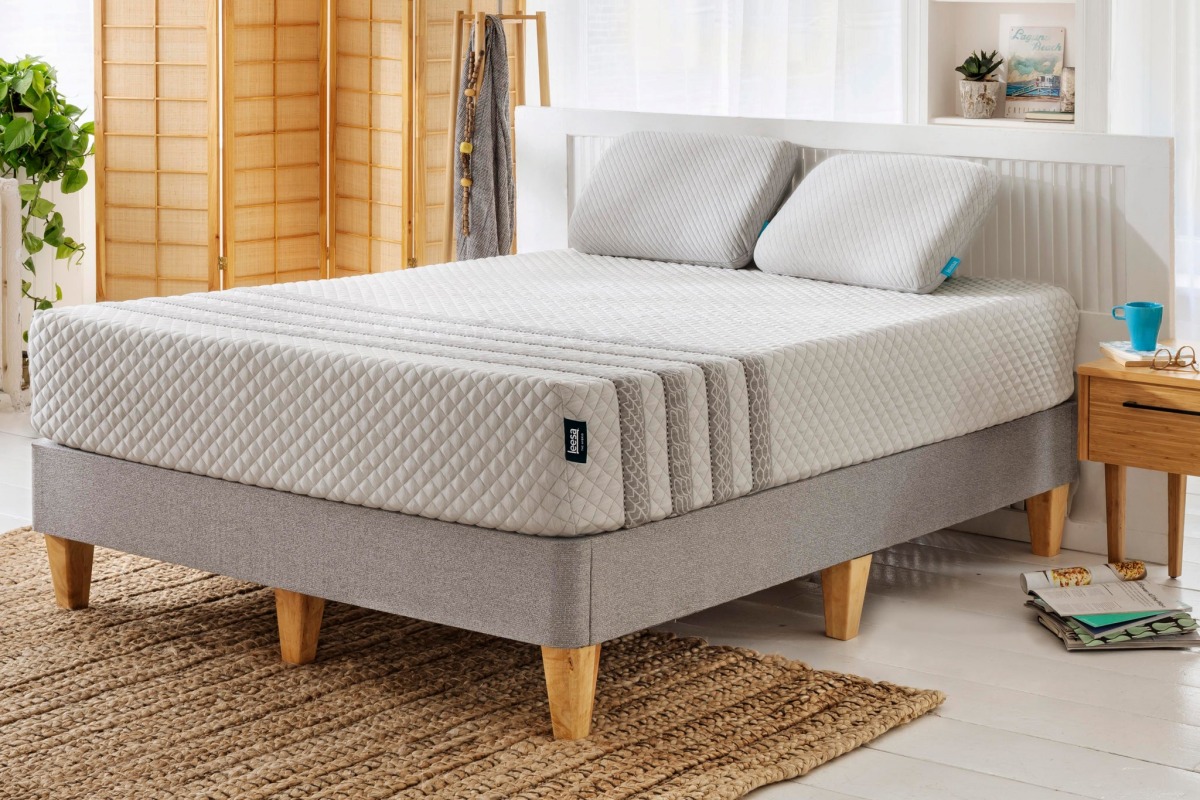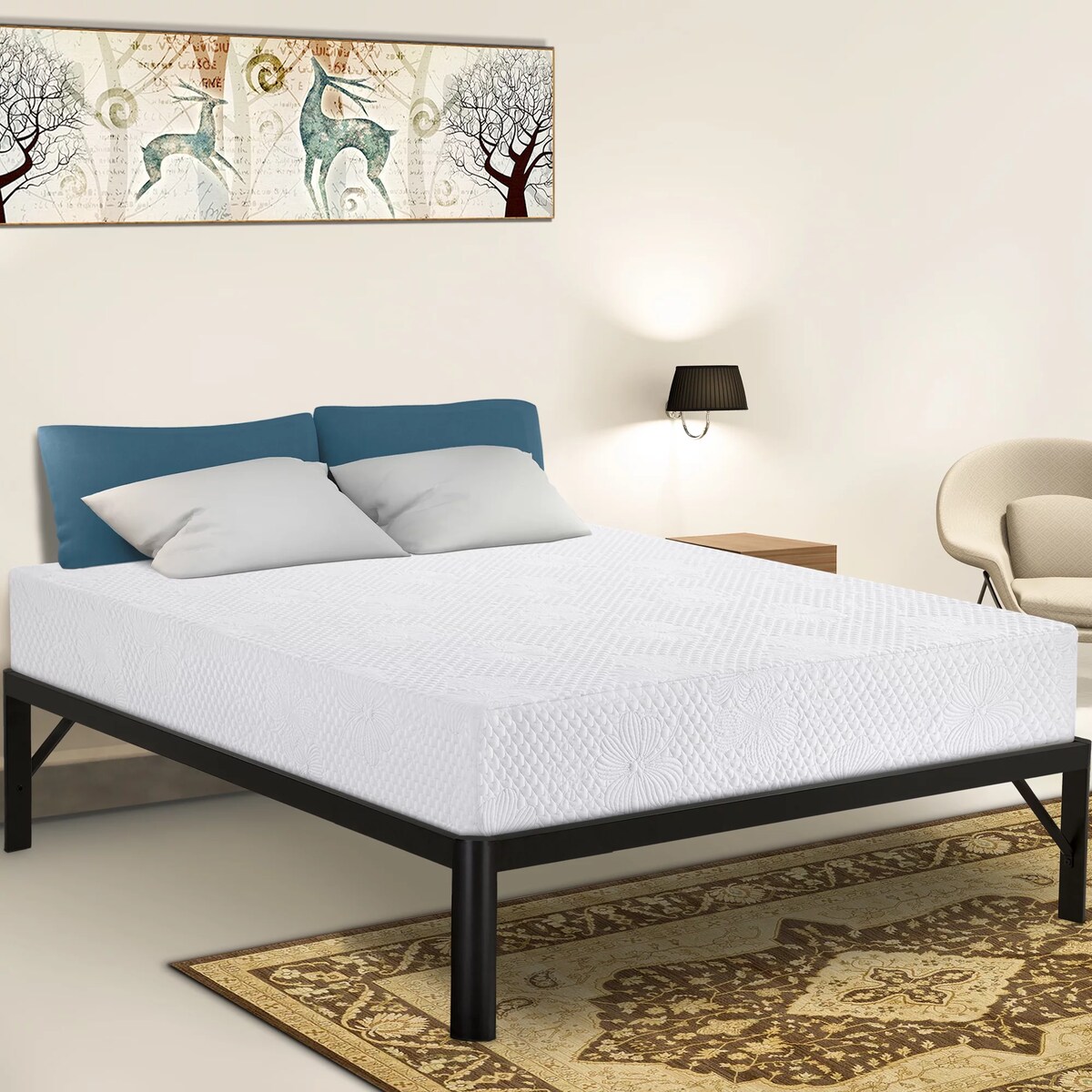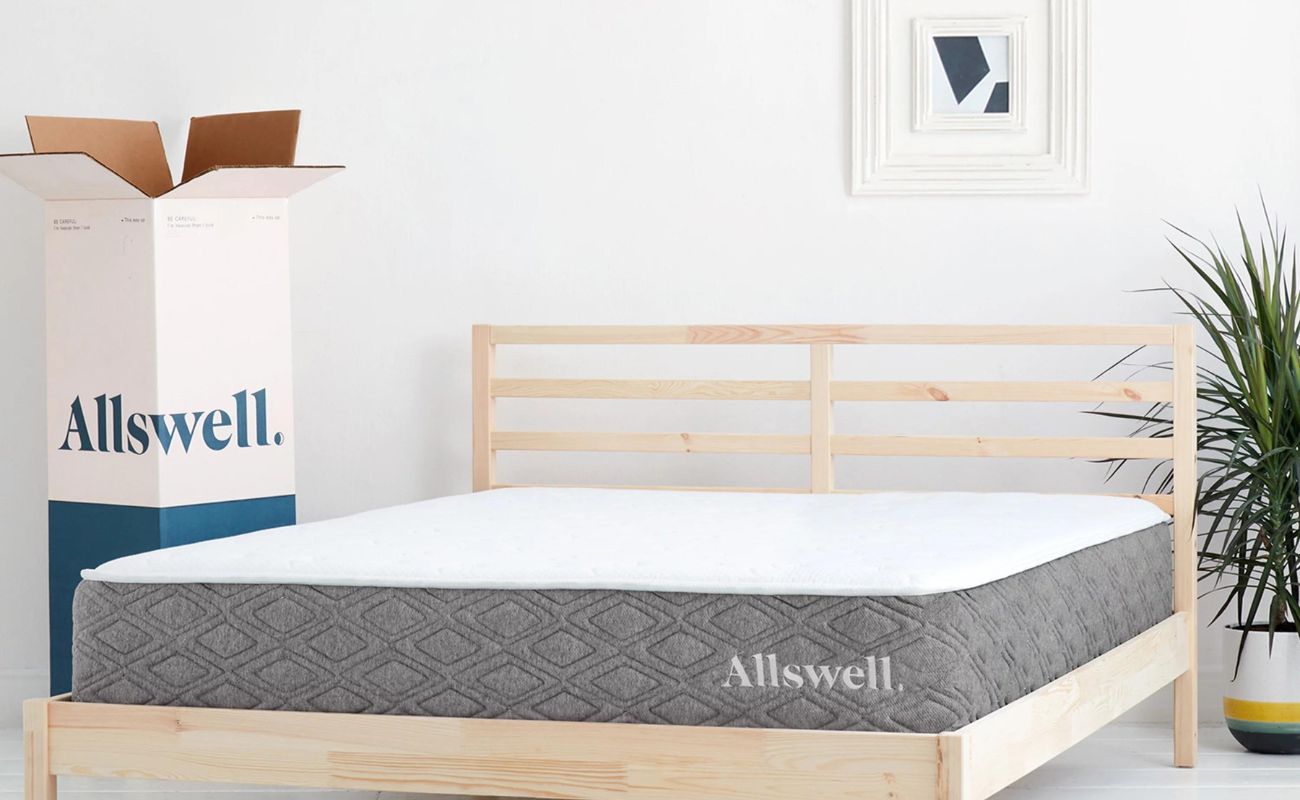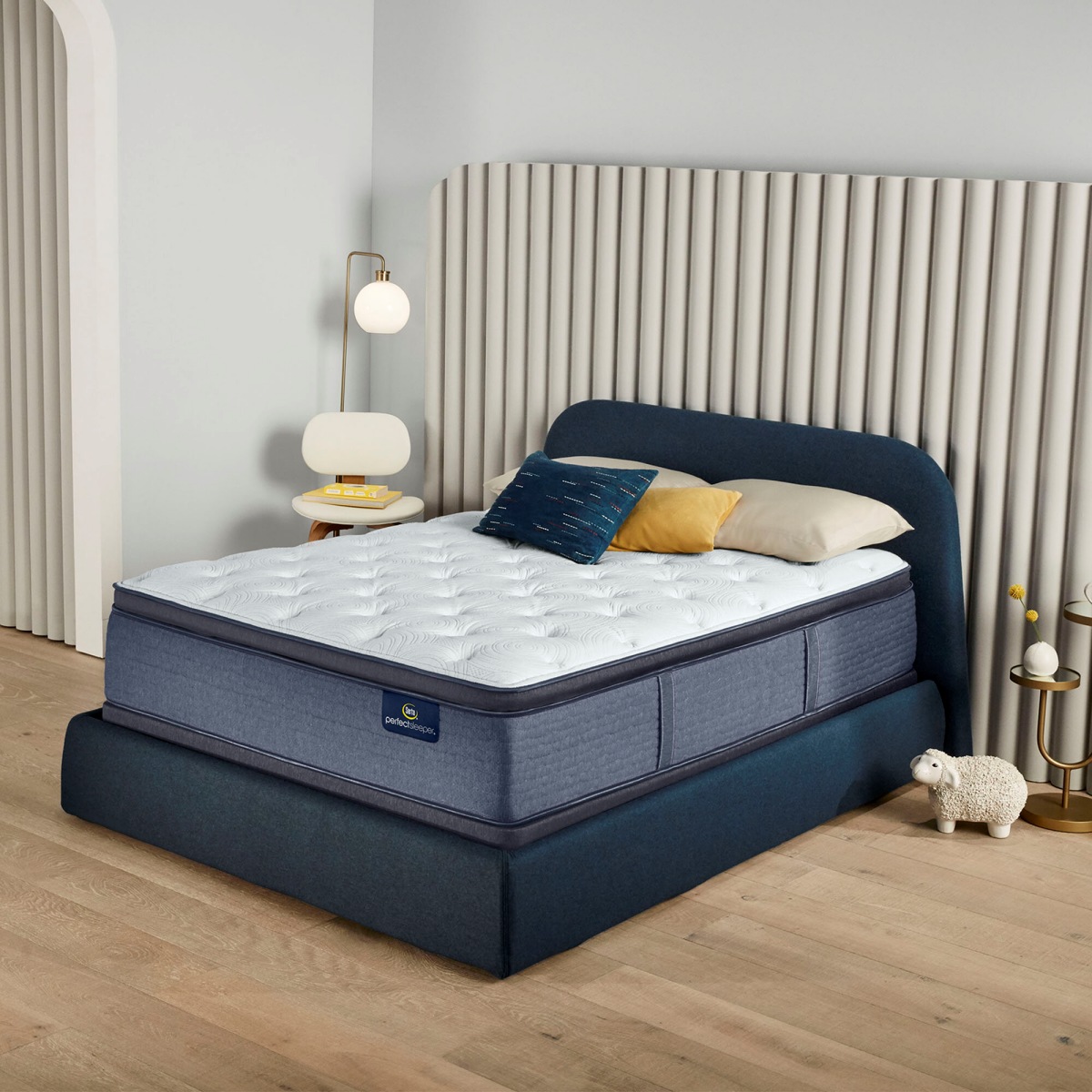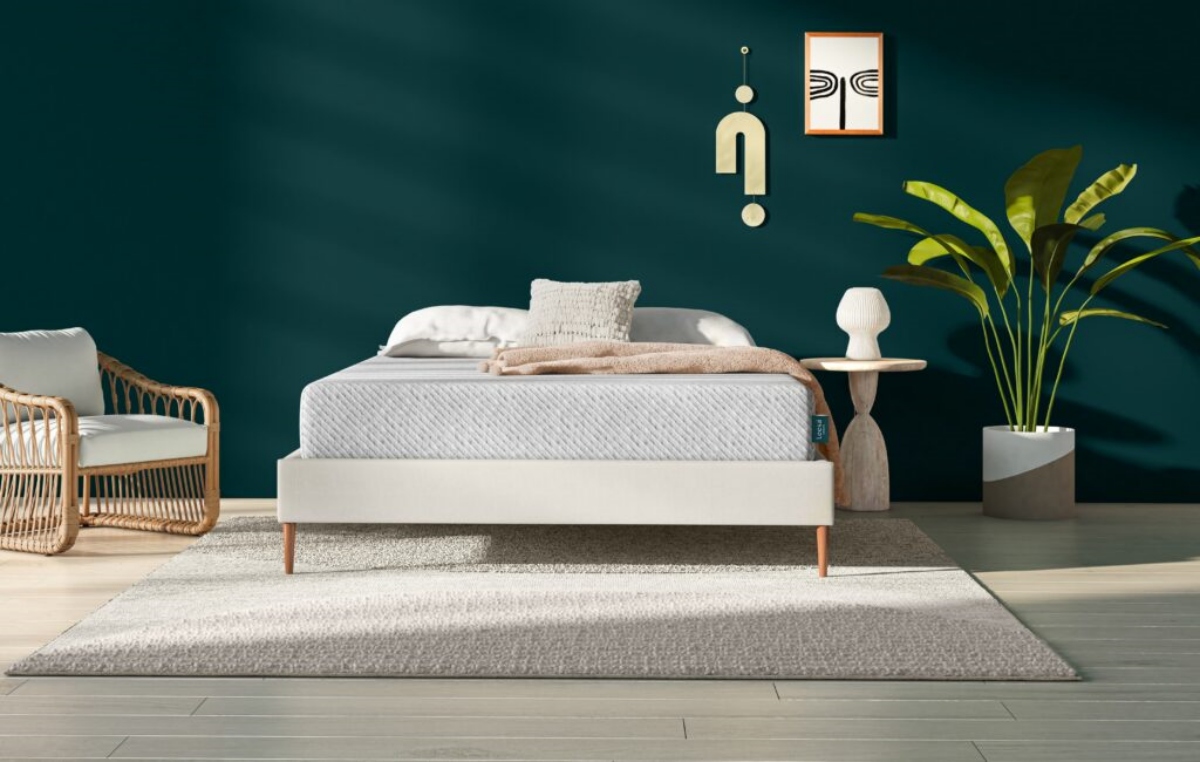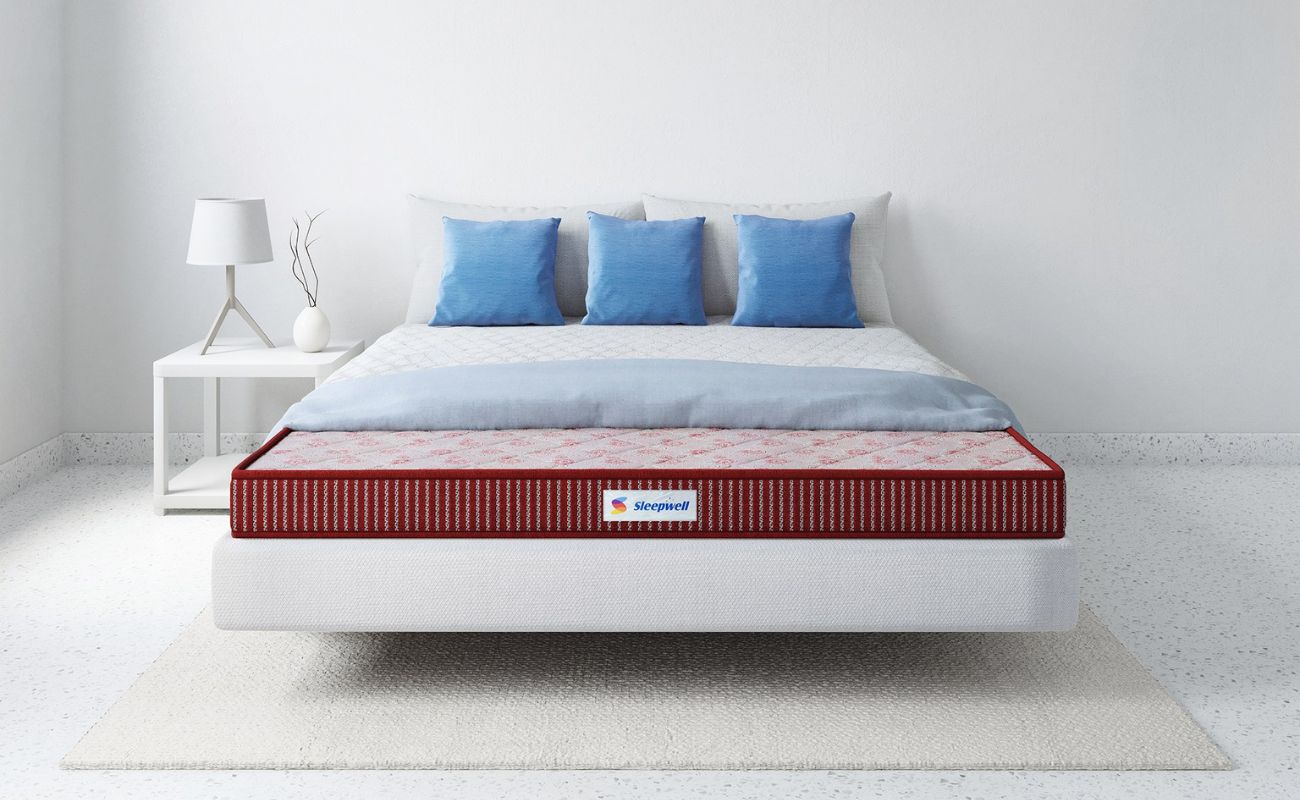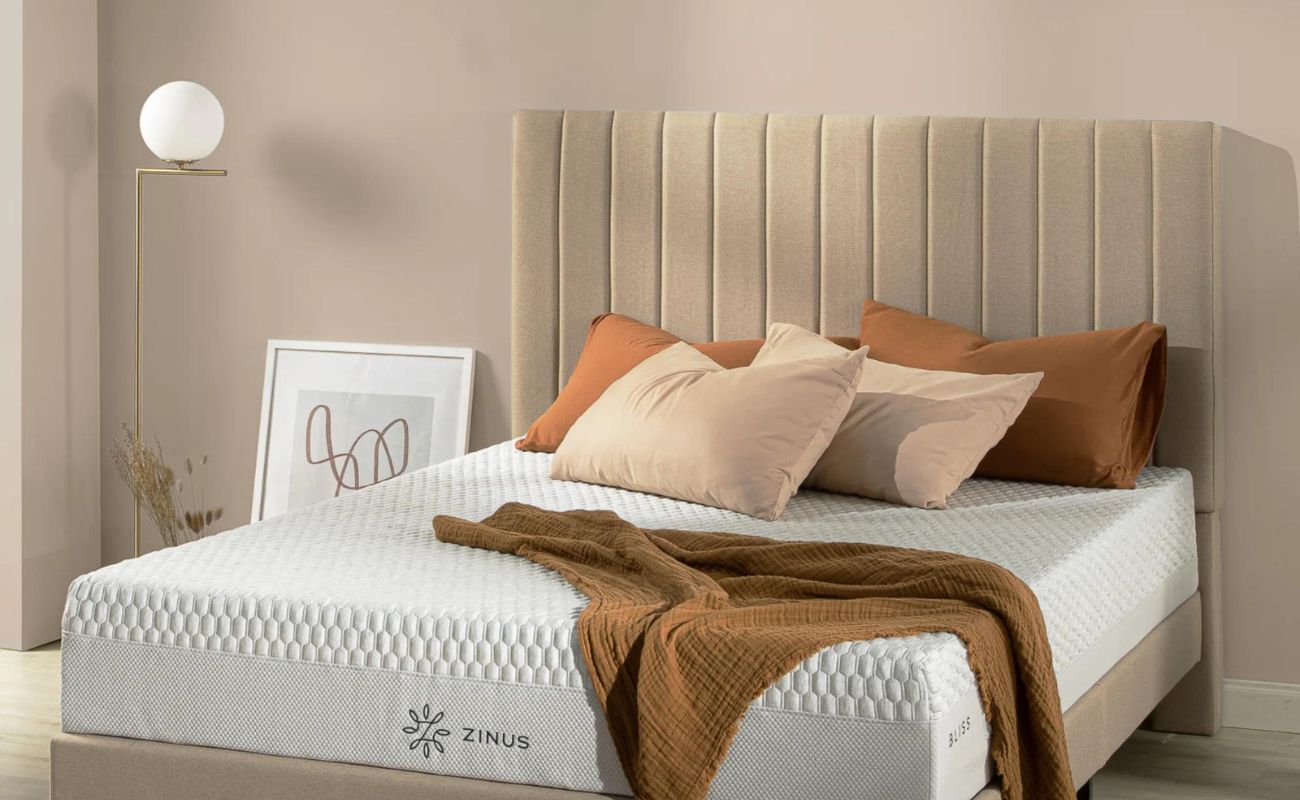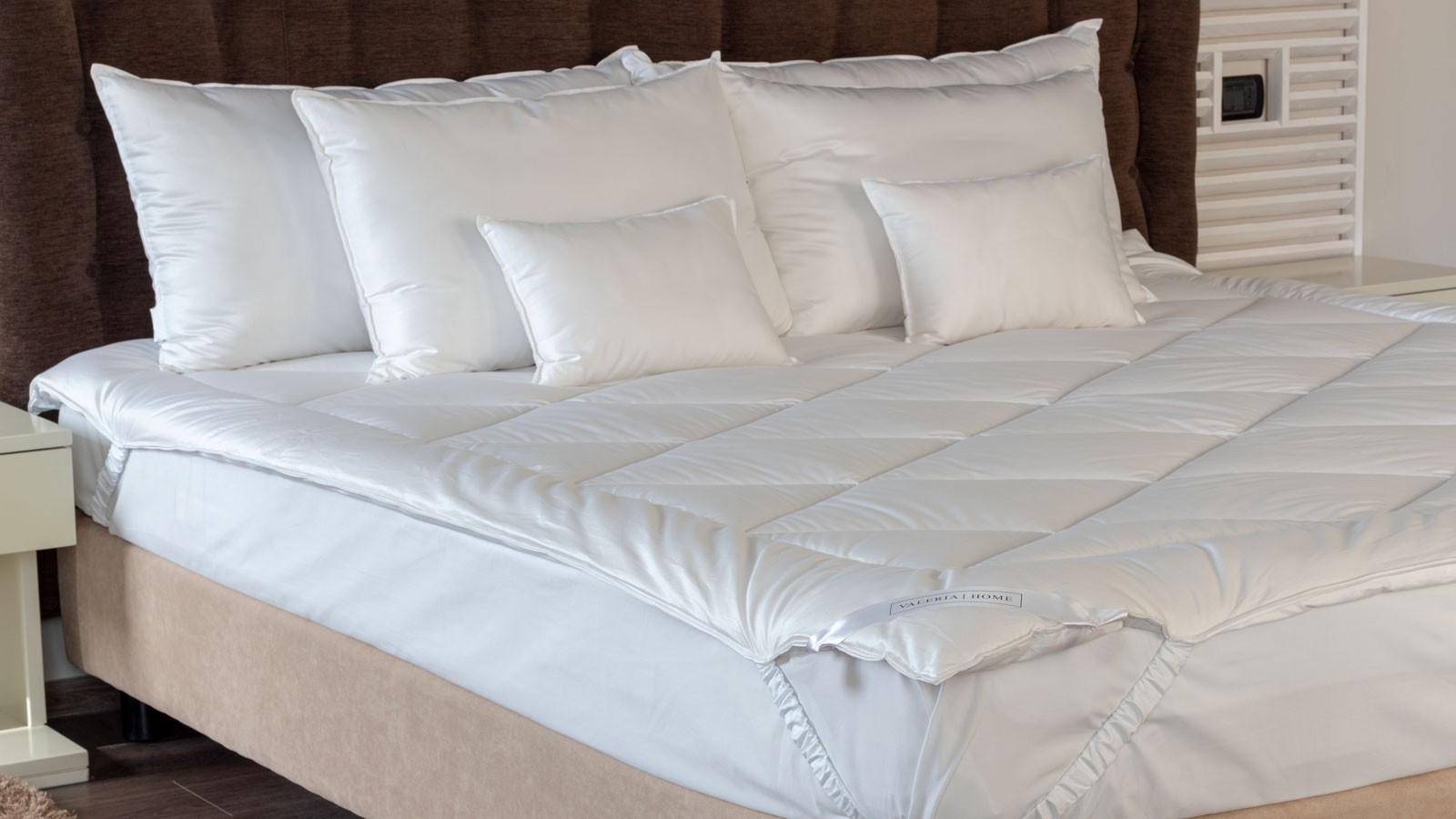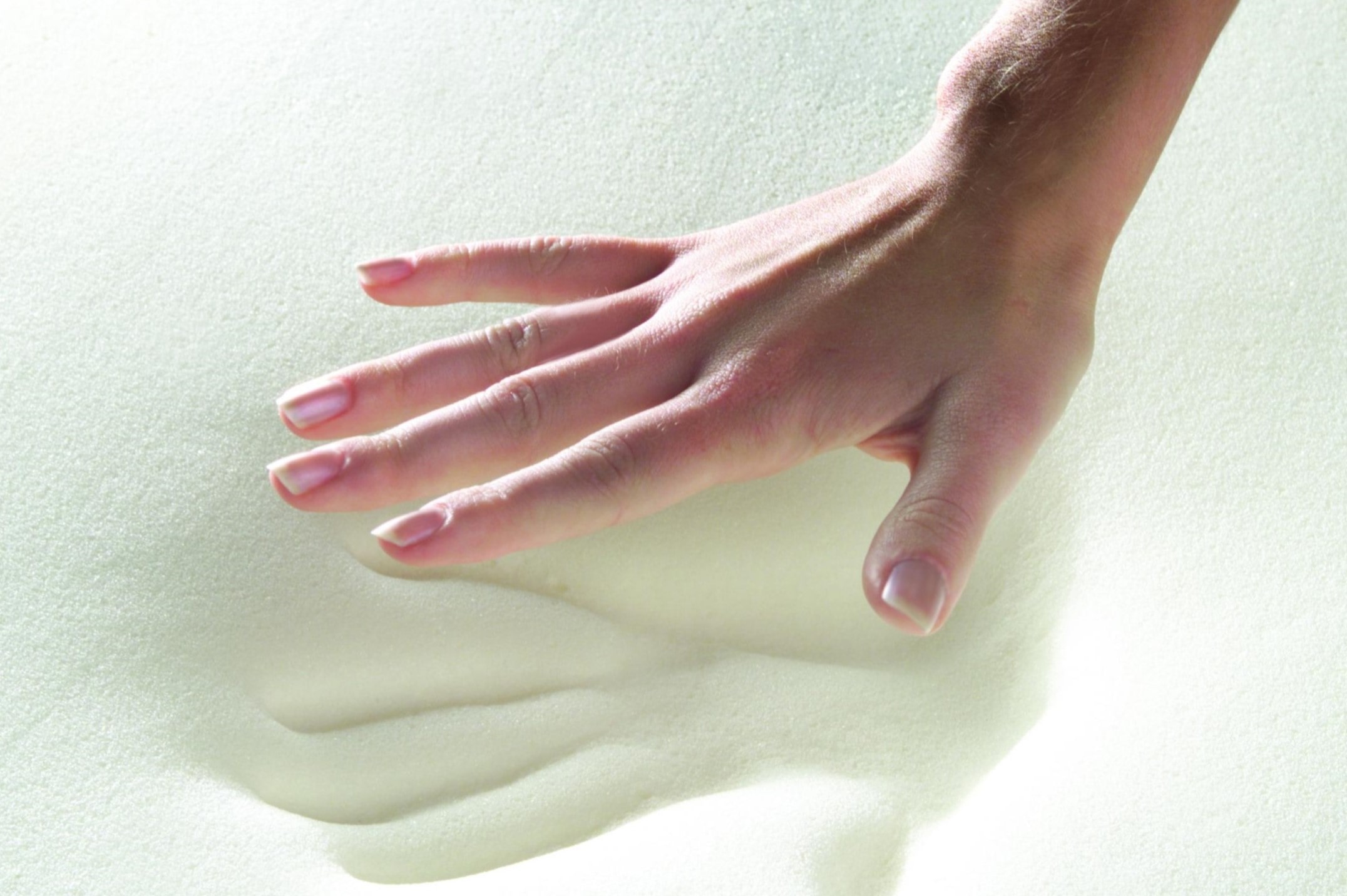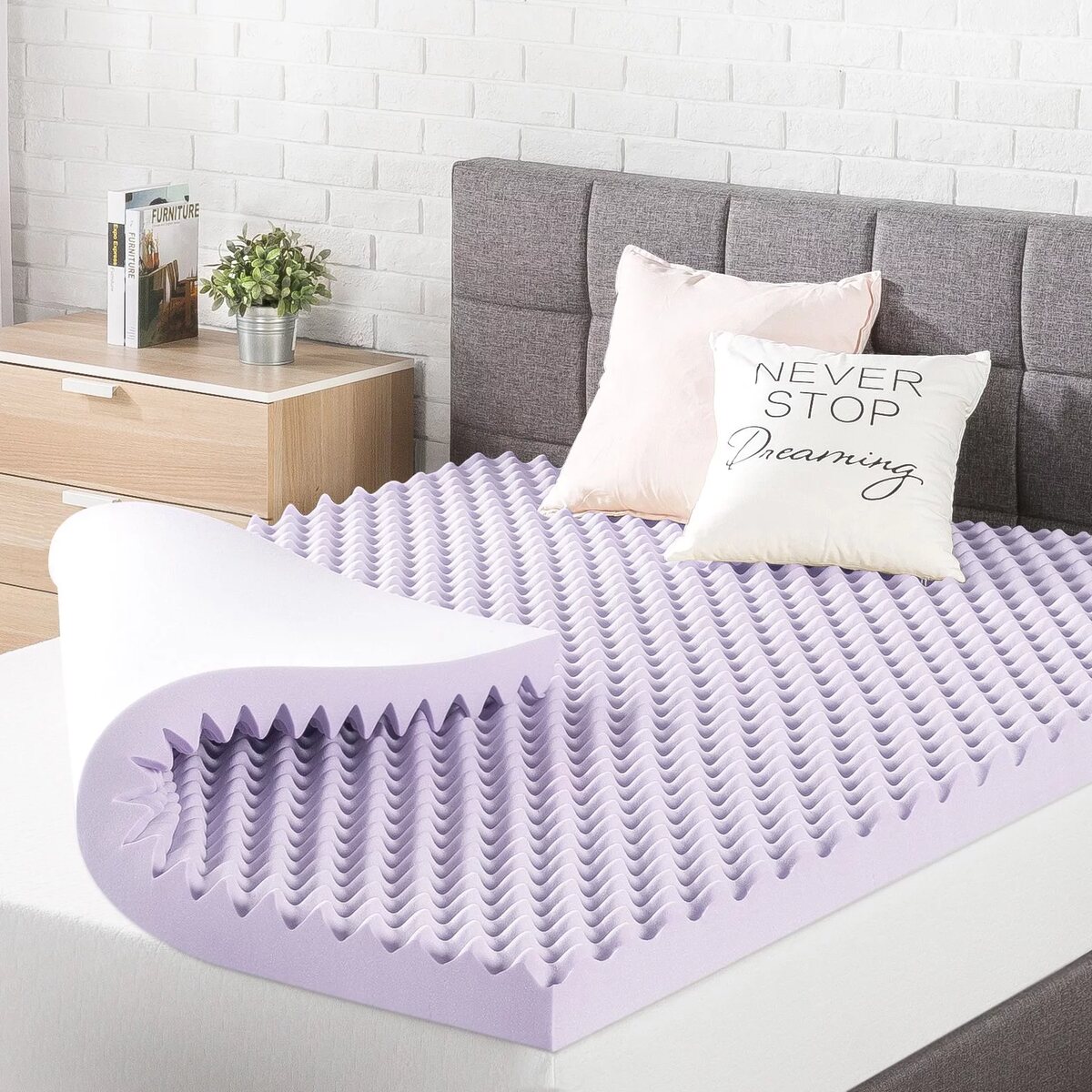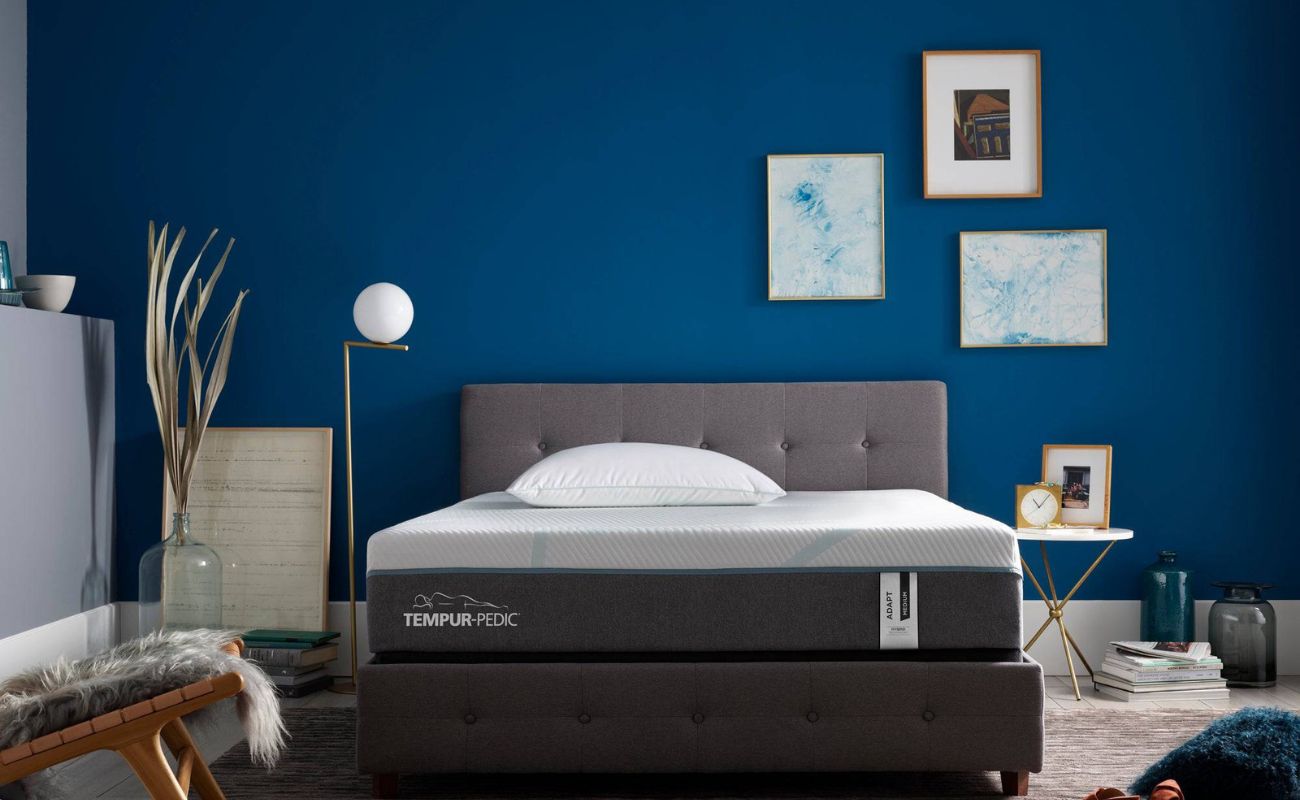Home>Furniture>Bedroom Furniture>Which Foam Mattress Is The Best
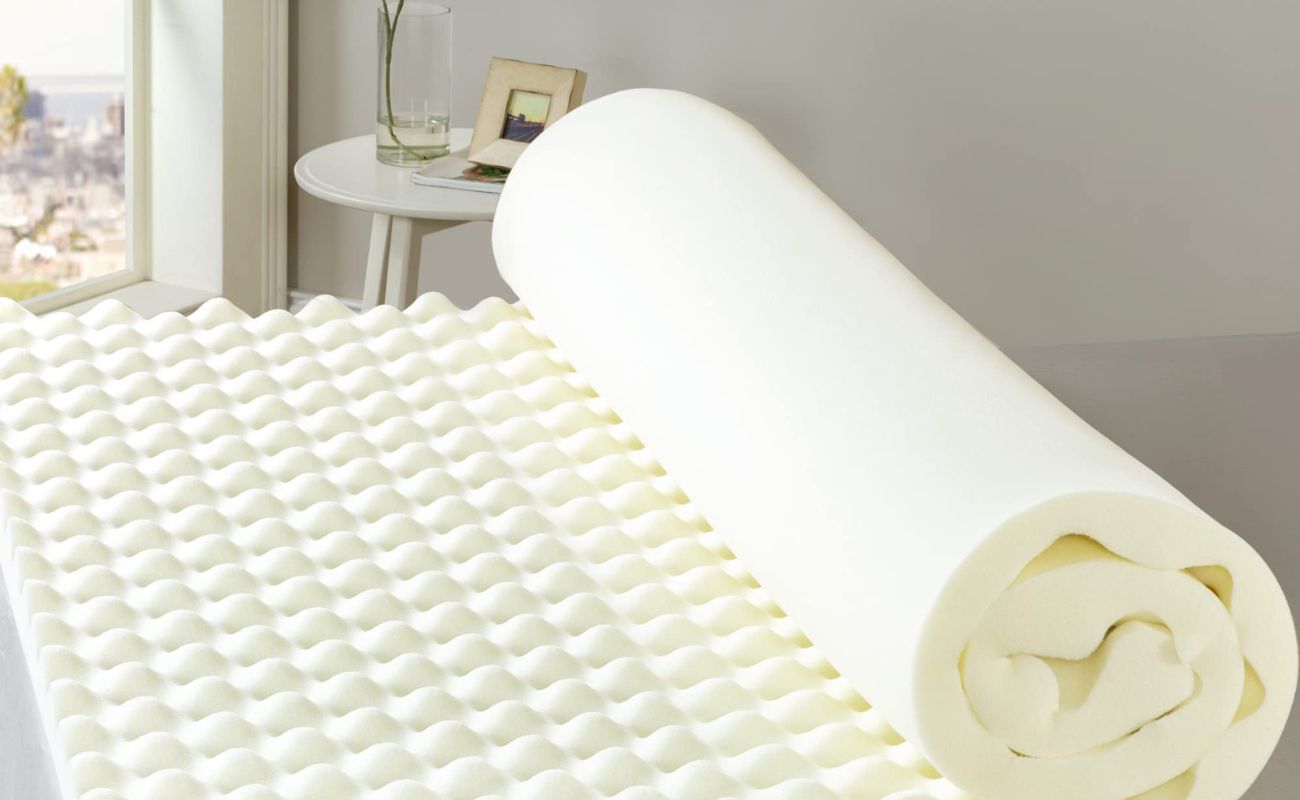

Bedroom Furniture
Which Foam Mattress Is The Best
Modified: February 25, 2024
Discover the best foam mattress for your bedroom furniture. Compare top brands and find the perfect mattress for a good night's sleep.
(Many of the links in this article redirect to a specific reviewed product. Your purchase of these products through affiliate links helps to generate commission for Storables.com, at no extra cost. Learn more)
Introduction
When it comes to furnishing your bedroom, one of the most essential items is the mattress. A good mattress not only provides comfort and support for a restful night’s sleep but can also have a significant impact on your overall health and well-being. With so many options available on the market, it can be overwhelming to choose the right mattress for your needs. However, with a little bit of knowledge, you can make an informed decision that will transform your bedroom into a cozy sanctuary.
In recent years, foam mattresses have gained popularity due to their exceptional comfort and durability. Unlike traditional spring mattresses, foam mattresses are designed to contour and adapt to your body’s shape, providing targeted pressure relief and spinal alignment. This feature makes them an ideal choice for individuals with specific sleep preferences or back problems.
There are several types of foam mattresses available, each with its own unique properties and benefits. The four most common types are memory foam, latex foam, hybrid foam, and polyurethane foam mattresses. In this comprehensive guide, we will explore each type in detail, including their features, pros and cons, as well as popular brands and models.
Before diving into the specifics of each type, it’s important to consider your personal preferences and requirements. Factors such as body weight, sleeping position, and any specific health issues can influence your choice of foam mattress. Additionally, keep in mind the size and layout of your bedroom to ensure the mattress fits comfortably into your space.
Now that we have set the stage, let’s begin our journey into the world of foam mattresses and uncover which one is the best fit for your bedroom.
Key Takeaways:
- Memory foam mattresses excel in relieving pressure points and motion isolation, making them ideal for individuals with chronic pain or those who share a bed.
- Latex foam mattresses offer natural, eco-friendly support with hypoallergenic properties, making them a durable and resilient choice for a comfortable sleep experience.
Memory Foam Mattresses
Memory foam mattresses are the pioneers of the foam mattress industry and have gained immense popularity for their ability to contour and mold to the shape of the body. This type of mattress is made from a viscoelastic material that responds to heat and pressure, providing excellent support and comfort.
One of the key features of memory foam mattresses is their ability to evenly distribute body weight, relieving pressure points and reducing the likelihood of tossing and turning during the night. This can be particularly beneficial for individuals with joint or back pain, as the mattress helps to alleviate discomfort and promote better sleep.
Pros:
- Excellent motion isolation: Memory foam mattresses have minimal motion transfer, making them ideal for couples or individuals sharing a bed. You won’t be disturbed by your partner’s movements during the night.
- Relieves pressure points: The conforming nature of memory foam provides targeted pressure relief, which can be beneficial for people with chronic pain or those who spend long hours in bed.
- Durable: High-quality memory foam mattresses are known for their durability and can last for many years with proper care.
Cons:
- Retains heat: Memory foam mattresses can trap body heat, causing some sleepers to feel hot during the night. However, advancements in technology have led to the development of memory foam mattresses with enhanced cooling properties.
- Initial odor: Some memory foam mattresses may emit a temporary odor known as off-gassing when they are first unpacked. This odor typically dissipates within a few days.
- Can be costly: Compared to other types of mattresses, memory foam mattresses can be more expensive. However, the investment is often worth it for the level of comfort and support they provide.
Popular Brands and Models:
- Tempur-Pedic: The Tempur-Pedic brand is renowned for its high-quality memory foam mattresses, offering a wide range of options to suit different sleep preferences.
- Casper: Casper mattresses combine memory foam with other materials to create a supportive and comfortable sleep surface. They also offer a risk-free trial period to ensure customer satisfaction.
- Leesa: Leesa mattresses are known for their all-foam construction with multiple layers of memory foam, providing a balance of support and pressure relief.
When considering a memory foam mattress, it’s important to pay attention to the density and thickness of the foam layers. Higher density foam generally offers better durability and support. Additionally, look for mattresses with CertiPUR-US® certification, ensuring they are free from harmful chemicals.
Next, let’s delve into another popular type of foam mattress, the latex foam mattress.
Latex Foam Mattresses
Latex foam mattresses are known for their natural and eco-friendly properties. These mattresses are made from the sap of rubber trees, which is processed to create a comfortable and supportive sleep surface. Latex foam mattresses offer a unique combination of bounce, responsiveness, and contouring support.
One of the key features of latex foam mattresses is their hypoallergenic nature. Latex is naturally resistant to dust mites, mold, and other allergens, making it an excellent choice for individuals with allergies or asthma.
Pros:
- Natural and eco-friendly: Latex foam mattresses are made from natural materials, making them a sustainable and eco-friendly choice.
- Durable and long-lasting: Latex foam is known for its resilience and durability. A high-quality latex mattress can last for many years without losing its shape or support.
- Excellent responsiveness: Latex foam provides a balance of contouring support and responsiveness, allowing for easy movement and changing sleep positions.
Cons:
- Can be heavy: Latex foam mattresses tend to be heavier than other types of mattresses, which can make them challenging to move or rotate.
- Initial cost: Latex mattresses are typically more expensive than traditional foam mattresses. However, their durability makes them a worthwhile investment in the long run.
- Less conforming than memory foam: While latex foam still provides excellent support, it may not contour to the body as closely as memory foam. This may be a preference for some sleepers.
Popular Brands and Models:
- Zenhaven: Zenhaven offers luxurious latex mattresses made from natural materials, providing both comfort and support.
- PlushBeds: PlushBeds specializes in organic latex mattresses, ensuring a chemical-free and eco-friendly sleep experience.
- Natural Form: Natural Form mattresses combine latex with other foam layers to create a supportive and comfortable sleep surface.
When choosing a latex foam mattress, consider the type of latex used. There are two primary types: Dunlop and Talalay. Dunlop latex is denser and more supportive, while Talalay latex offers a softer and more responsive feel. Additionally, look for certifications such as GOLS (Global Organic Latex Standard) and OEKO-TEX® Standard 100 to ensure the latex is of high quality and free from toxins.
Now, let’s explore the world of hybrid foam mattresses.
When choosing the best foam mattress, consider factors such as density, firmness, and materials used. Look for a mattress with high-density foam for better support and durability. Additionally, consider your sleeping position and any specific health concerns when making your decision.
Hybrid Foam Mattresses
Hybrid foam mattresses combine the best of both worlds by incorporating both foam layers and innerspring coils. This combination of materials aims to provide optimal comfort, support, and responsiveness.
One of the key features of hybrid foam mattresses is their ability to offer the contouring and pressure relief of foam, along with the support and durability of innerspring coils. This makes them a popular choice for sleepers who want the benefits of foam but also prefer the traditional feel of a spring mattress.
Pros:
- Enhanced support: The addition of innerspring coils in hybrid foam mattresses provides excellent support and promotes proper spinal alignment.
- Improved airflow and temperature regulation: The presence of innerspring coils allows for better airflow, helping to dissipate heat and keep sleepers cool throughout the night.
- Versatile comfort: Hybrid mattresses offer a balance of contouring and responsiveness, making them suitable for a wide range of sleep preferences and body types.
Cons:
- Higher price range: Hybrid foam mattresses tend to be more expensive compared to traditional foam or innerspring mattresses. However, their durability and comfort justify the investment for many consumers.
- Potential for motion transfer: While hybrid mattresses minimize motion transfer, they may not be as effective at isolating movement as all-foam mattresses.
- Heavier than traditional foam mattresses: The combination of foam layers and innerspring coils makes hybrid mattresses heavier, which can pose challenges when it comes to moving or rotating them.
Popular Brands and Models:
- Beautyrest: Beautyrest offers a wide range of hybrid mattresses, known for their luxurious comfort and support.
- Saatva: Saatva mattresses combine memory foam with individually wrapped coils, providing exceptional comfort and durability.
- Helix: Helix offers customizable hybrid mattresses, allowing you to choose the firmness level and other features to cater to your specific sleep needs.
When considering a hybrid foam mattress, pay attention to the type and quality of foam used, as well as the coil system. Look for features like pocketed coils for better motion isolation and high-density foam for enhanced support. Additionally, consider the thickness and number of layers to find the combination that suits your comfort preferences.
Now, let’s move on to the last type of foam mattress – polyurethane foam.
Polyurethane Foam Mattresses
Polyurethane foam mattresses, also known as polyfoam mattresses, are made from synthetic materials and are known for their affordability and versatility. These mattresses offer a balance of support and comfort at a budget-friendly price point.
One of the key features of polyurethane foam mattresses is their ability to provide consistent support and pressure relief. The foam is designed to conform to the body’s contours, ensuring proper spinal alignment and minimizing pressure points.
Pros:
- Affordability: Polyurethane foam mattresses are often more affordable compared to other types of foam mattresses, making them a great option for budget-conscious shoppers.
- Good motion isolation: Polyurethane foam absorbs movement, reducing the transfer of motion across the mattress. This can be particularly beneficial for couples or individuals who share a bed.
- Durability: High-density polyurethane foam mattresses can be quite durable, offering long-lasting support and comfort.
Cons:
- Less contouring: While polyurethane foam provides support, it may not contour to the body as closely as memory foam or latex foam mattresses. This may be a preference for sleepers who prefer a firmer feel.
- Potential for heat retention: Polyurethane foam tends to retain heat more than other foam types, which may cause some sleepers to feel uncomfortably warm during the night. Look for mattresses with enhanced cooling properties if temperature regulation is a concern.
- Odor potential: Similar to memory foam mattresses, polyurethane foam mattresses may emit a temporary odor known as off-gassing when they are first unpacked. This odor typically dissipates within a few days.
Popular Brands and Models:
- Signature Sleep: Signature Sleep offers a variety of polyurethane foam mattresses at affordable prices, ensuring a comfortable sleep experience for budget-conscious shoppers.
- Zinus: Zinus is known for its affordable polyurethane foam mattresses with different levels of firmness, offering options to cater to various sleep preferences.
- Linenspa: Linenspa combines polyurethane foam with other materials to create comfortable and supportive mattresses at an affordable price point.
When selecting a polyurethane foam mattress, consider factors such as foam density and thickness. Higher density foam tends to be more durable and supportive. Additionally, take note of the warranty offered by the manufacturer, as it can be an indicator of the mattress’s overall quality and longevity.
Now that we have explored the different types of foam mattresses, it’s time to weigh the pros and cons of each and make an informed decision based on your individual preferences and needs.
But before we conclude, remember that it’s always a good idea to try out a mattress in person or utilize trial periods offered by manufacturers to ensure the best fit for your bedroom and optimal comfort for a restful sleep.
Read more: Which Is Better: Spring Or Foam Mattress
Conclusion
Choosing the right mattress for your bedroom is a crucial decision that can significantly impact your sleep quality and overall well-being. Foam mattresses, including memory foam, latex foam, hybrid foam, and polyurethane foam, have gained popularity for their comfort, support, and ability to cater to different sleep preferences.
Memory foam mattresses excel in contouring to the body and relieving pressure points, making them ideal for individuals with specific sleep needs or chronic pain. Latex foam mattresses, on the other hand, offer a natural and eco-friendly option with excellent support and hypoallergenic properties. Hybrid foam mattresses combine the benefits of foam and innerspring coils, providing optimal comfort, support, and temperature regulation. Meanwhile, polyurethane foam mattresses offer affordability, durability, and consistent support.
It’s important to consider your personal preferences, sleep habits, and budget when selecting a foam mattress. Factors such as body weight, sleeping position, and any specific health concerns can influence your choice. Additionally, be mindful of the materials used, certifications obtained, and the reputation of the brand.
Popular brands like Tempur-Pedic, Casper, Saatva, and Zinus offer a range of foam mattresses known for their quality and customer satisfaction. However, it’s always advisable to try out a mattress in person or take advantage of trial periods offered by manufacturers to assess comfort and suitability for your specific needs.
Remember, a good mattress is an investment in your sleep and well-being. Take the time to research, compare options, and consider your individual requirements to ensure you choose the best foam mattress for your bedroom. With the right mattress in place, you can look forward to restful nights, rejuvenated mornings, and a bedroom sanctuary that promotes relaxation and sleep.
Now that you are armed with the knowledge of foam mattress types and their features, it’s time to embark on your journey to find the perfect foam mattress that embraces comfort, support, and a good night’s sleep.
Frequently Asked Questions about Which Foam Mattress Is The Best
Was this page helpful?
At Storables.com, we guarantee accurate and reliable information. Our content, validated by Expert Board Contributors, is crafted following stringent Editorial Policies. We're committed to providing you with well-researched, expert-backed insights for all your informational needs.
